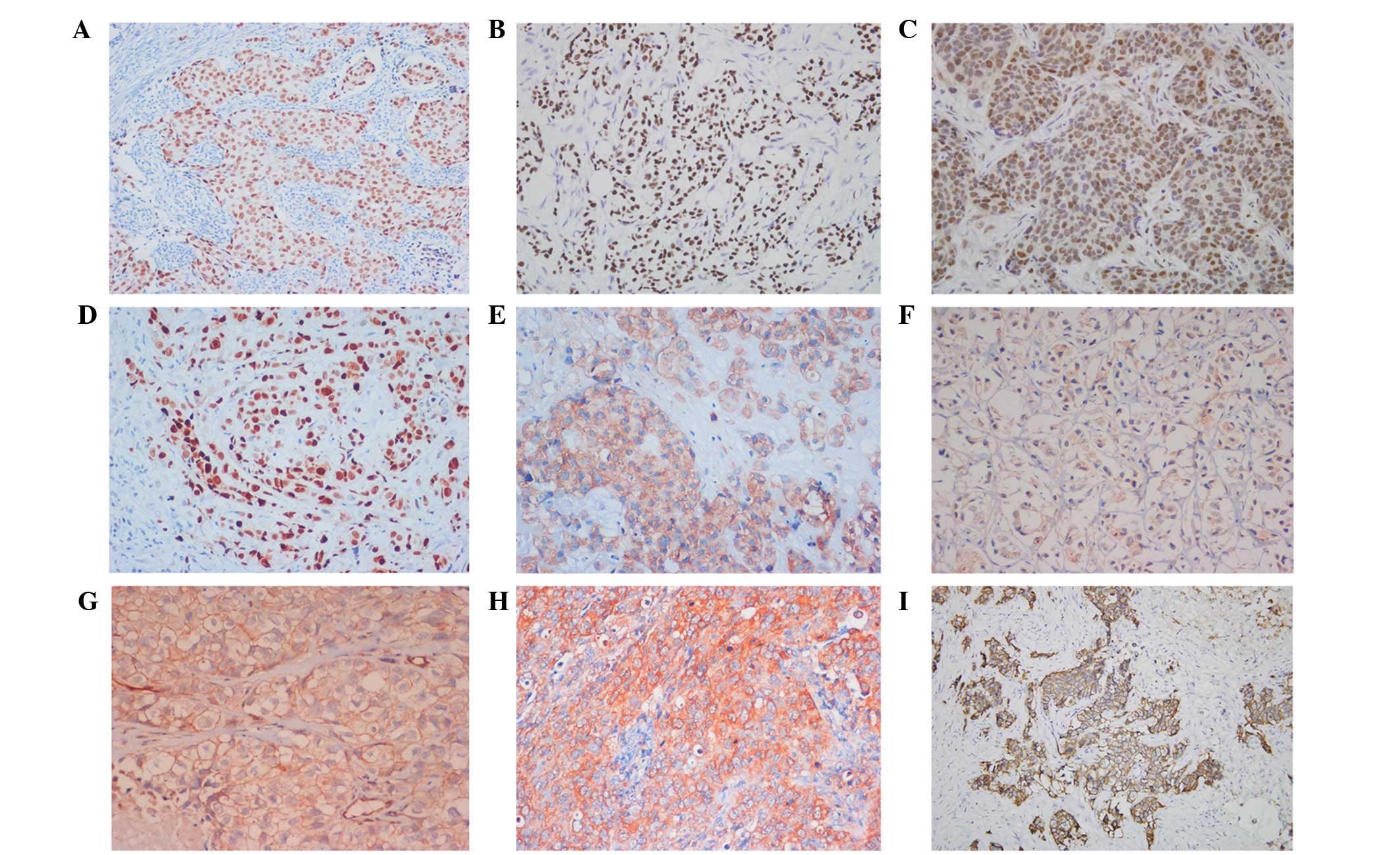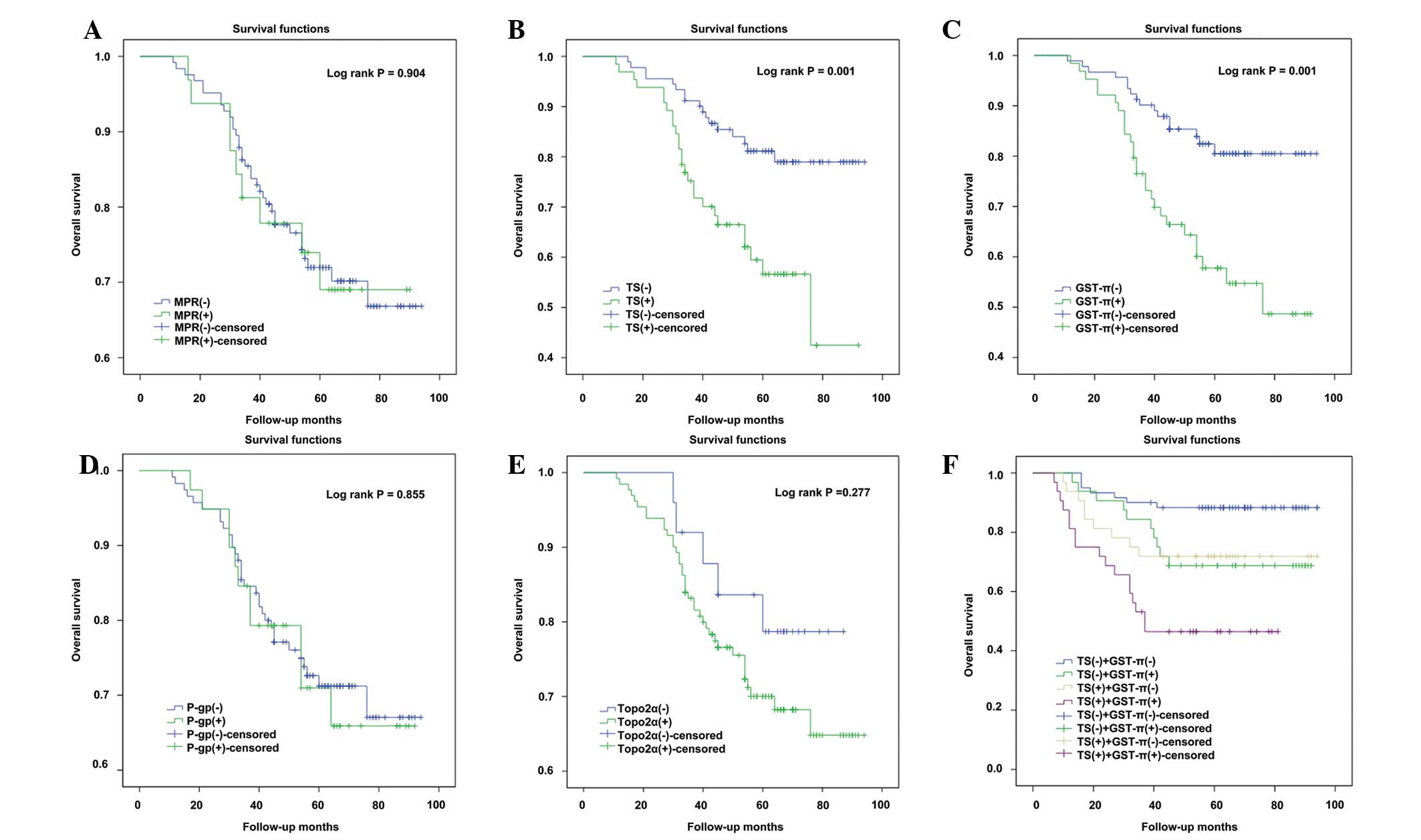|
1
|
Liu H, Liu Y and Zhang JT: A new mechanism
of drug resistance in breast cancer cells: fatty acid synthase
overexpressionme-mediated palmitate overproduction. Mol Cancer
Ther. 7:263–270
|
|
2
|
Cance WG, Carey LA, Calvo BF, et al:
Long-term outcome of neoadjuvant therapy for locally advanced
breast carcinoma: effective clinical downstaging allows breast
preservating and predicits outstanding local control and survival.
Ann Surg. 236:295–303. 2002.
|
|
3
|
Sachelarie I, Grossbard ML, Chadha M, et
al: Primary systemic therapy of breast cancer. Oncologist.
11:574–589. 2006.
|
|
4
|
LaPensee EW and Ben-Jonathan N: Novel
roles of prolactin and estrogens in breast cancer: resistance to
chemotherapy. Endocr Relat Cancer. 17:R91–R107. 2010.
|
|
5
|
Coley HM: Mechanisms and strategies to
overcome chemotherapy resistance in metastatic breast cancer.
Cancer Treat Rev. 34:378–390. 2008.
|
|
6
|
Jacobs TW, Gown AM, Yaziji H, Barnes MJ
and Schnitt SJ: Specificity of HercepTest in determining HER-2/neu
status of breast cancers using the United States Food and Drug
Administration-approved scoring system. J Clin Oncol. 17:1983–1987.
1999.
|
|
7
|
Gottesman MM, Fojo T and Bates SE:
Multidrug resistance in cancer: role of ATP-dependent transporters.
Nat Rev Cancer. 2:48–58. 2002.
|
|
8
|
Sekine I and Saijo N: Polymorphisms of
metabolizing enzymes and transporter proteins involved in the
clearance of anticancer agents. Ann Oncol. 12:1515–1525. 2001.
|
|
9
|
Orlowski S and Garrigos M: Multiple
recognition of various amphiphilic molecules by the multidrug
resistance P-glycoprotein: molecular mechanisms and pharmacological
consequences coming from functional interactions between various
drugs. Anticancer Res. 19:3109–3123. 1999.
|
|
10
|
Linn SC, Giaccone G, van Diest PJ, et al:
Prognostic relevance of P-glycoprotein expression in breast cancer.
Ann Oncol. 6:679–685. 1995.
|
|
11
|
Savas B, Bozcuk H, Özdo M, et al:
Molecular and clinical parameters which determine the docetaxel
response in metastatic breast cancer. J Clin Oncol.
22:97322004.
|
|
12
|
Cui SD, Liu ZZ, Liu H, Li LF, Yang H and
Li WL: The relationship between 99mTc-MIBI scintimammography of
breast cancer and multidrug-resistant proteins. Zhonghua Zhong Liu
Za Zhi. 27:606–608. 2005.(In Chinese).
|
|
13
|
Chekhun VF, Zhylchuk VE, Lukyanova NY,
Vorontsova AL and Kudryavets YI: Expression of drug resistance
proteins in triple-receptor-negative tumors as the basis of
individualized therapy of the breast cancer patients. Exp Oncol.
31:123–124. 2009.
|
|
14
|
Jakoby WB: The glutathione S-transferases:
a group of multifunctional detoxification proteins. Adv Enzymol
Relat Areas Mol Biol. 46:383–414. 1978.
|
|
15
|
Tew KD: Glutathione-associated enzymes in
anticancer drug resistance. Cancer Res. 54:4313–4320. 1994.
|
|
16
|
Moscow JA, Townsend AJ, Goldsmith ME, et
al: Isolation of the human anionic glutathione S-transferase cDNA
and the relation of its gene expression to estrogen-receptor
content in primary breast cancer. Proc Natl Acad Sci USA.
85:6518–6522. 1988.
|
|
17
|
Gilbert L, Elwood LJ, Merino M, et al: A
pilot study of pi-class glutathione S-transferase expression in
breast cancer: correlation with estrogen receptor expression and
prognosis in node-negative breast cancer. J Clin Oncol. 11:49–58.
1993.
|
|
18
|
Colozza M, Azambuja E, Cardoso F, Sotiriou
C, Larsimont D and Piccart MJ: Proliferative markers as prognostic
and predictive tools in early breast cancer: where are we now? Ann
Oncol. 16:1723–1739. 2005.
|
|
19
|
Coon JS, Marcus E, Gupta-Burt S, et al:
Amplification and overexpression of topoisomerase IIalpha predict
response to anthracycline-based therapy in locally advanced breast
cancer. Clin Cancer Res. 8:1061–1067. 2002.
|
|
20
|
MacGrogan G, Rudolph P, Mascarel Id, et
al: DNA topoisomerase IIalpha expression and the response to
primary chemotherapy in breast cancer. Br J Cancer. 89:666–671.
2003.
|
|
21
|
Campiglio M, Somenzi G, Olgiati C, et al:
Role of proliferation in HER2 status predicted response to
doxorubicin. Int J Cancer. 105:568–573. 2003.
|
|
22
|
Depowski PL, Rosenthal SI, Brien TP,
Stylos S, Johnson RL and Ross JS: Topoisomerase IIalpha expression
in breast cancer: correlation with outcome variables. Mod Pathol.
13:542–547. 2000.
|
|
23
|
Rudolph P, Olsson H, Bonatz G, et al:
Correlation between p53, c-erbB-2, and topoisomerase II alpha
expression, DNA ploidy, hormonal receptor status and proliferation
in 356 node-negative breast carcinomas: prognostic implications. J
Pathol. 187:207–216. 1999.
|
|
24
|
Mukherjee A, Shehata M, Moseley P, Rakha
E, Ellis I and Chan S: Topo2alpha protein expression predicts
response to anthracycline combination neo-adjuvant chemotherapy in
locally advanced primary breast cancer. Br J Cancer. 103:1794–1800.
2010.
|
|
25
|
Wang L, Jiang Z, Sui M, Shen J, Xu C and
Fan W: The potential biomarkers in predicting pathologic response
of breast cancer to three different chemotherapy regimens: a case
control study. BMC Cancer. 9:2262009.
|
|
26
|
Navalgund LG, Rossana C, Muench AJ and
Johnson LF: Cell cycle regulation of thymidylate synthetase gene
expression in cultured mouse fibroblasts. J Biol Chem.
255:7386–7390. 1980.
|
|
27
|
Carreras CW and Santi DV: The catalytic
mechanism and structure of thymidylate synthase. Annu Rev Biochem.
64:721–762. 1995.
|
|
28
|
Aschele C, Debernardis D, Casazza S, et
al: Immunohistochemical quantitation of thymidylate synthase
expression in colorectal cancer metastases predicts for clinical
outcome to fluorouracil-based chemotherapy. J Clin Oncol.
17:1760–1770. 1999.
|
|
29
|
Johnston PG, Fisher ER, Rockette HE, et
al: The role of thymidylate synthase expression in prognosis and
outcome of adjuvant chemotherapy in patients with rectal cancer. J
Clin Oncol. 12:2640–2647. 1994.
|
|
30
|
Suda Y, Kuwashima Y, Tanaka Y, Uchida K
and Akazawa S: Immunohistochemical detection of thymidylate
synthase in advanced gastric cancer: a prognostic indicator in
patients undergoing gastrectomy followed by adjuvant chemotherapy
with 5-fluoropyrimidines. Anticancer Res. 19:805–810. 1999.
|
|
31
|
Lee JH, Park JH, Jung Y, et al: Histone
deacetylase inhibitor enhances 5-fluorouracil cytotoxicity by
down-regulating thymidylate synthase in human cancer cells. Mol
Cancer Ther. 5:3085–3095. 2006.
|
|
32
|
Gomez HL, Santillana SL, Vallejos CS, et
al: A phase II trial of pemetrexed in advanced breast cancer:
clinical response and association with molecular target expression.
Clin Cancer Res. 12:832–838. 2006.
|
|
33
|
Brandi M, Calascibetta A, Cabibi D, et al:
Relationship between thymidylate synthase expression and p53 levels
with the treatment of cyclophosphamide, methotrexate,
5-fluorouracil chemotherapy (CMF) versus docetaxel (TXT) in locally
advanced carcinoma of the breast. J Clin Oncol. 24:105462006.
|
















